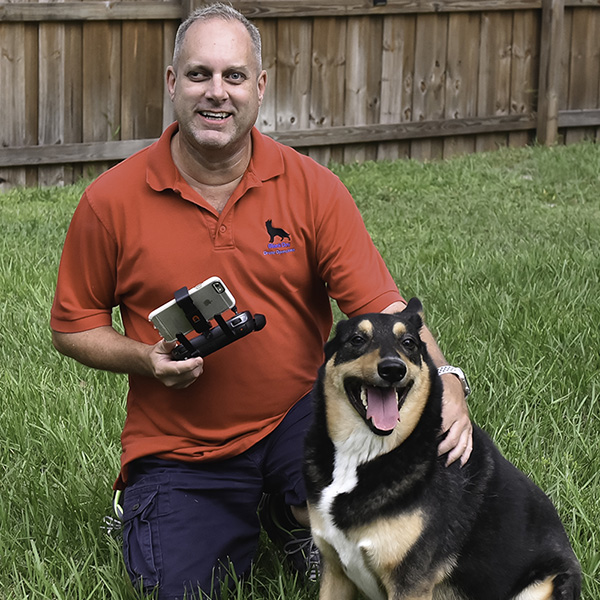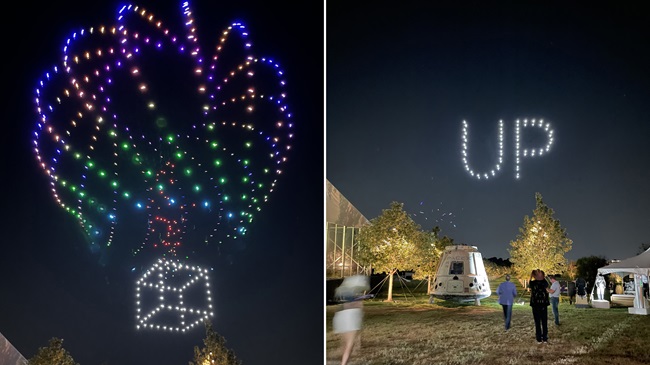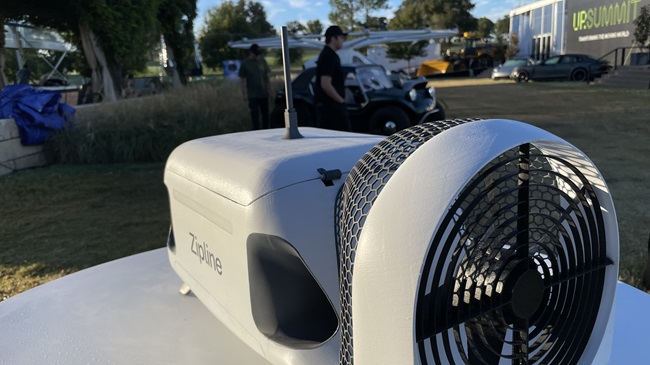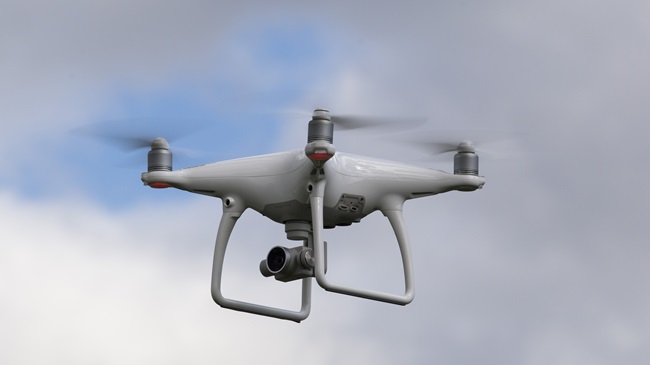Droning the horror
Flight among trees for independent film
Follow me behind the scenes on a horror film set, where only the drone is at risk of a horrible death.
Florida, as you may or may not know, has become quite a hotbed of film production. My personal favorites are horror flicks and thrillers, and it just so happens that many independent filmmakers in the area are working to serve up more. This trend recently created an opportunity to work on an Orlando-based project, Survive…. If I Let You, written and directed by Matthew Lamont Burgess.
Preproduction
Film production needs to be well-planned. Everything including scripting, acting, and cinematography must be thought out in advance, then executed efficiently and professionally.
Burgess and I spent a good deal of time discussing the particulars of the shot he was after: a long, dreamy, flight through the trees. The camera twists and turns among the trees and palm fronds, giving the viewer a sense of not quite being in control. Oh, and Burgess wanted the camera to fly backward.
The location had been scouted previously, but the day of the shoot we walked the path numerous times, taking note of every angle, elevation change, tree limb, and obstacle. (Times like these are when those stick skills can make or break your shot, so practice, practice, practice.)
Once we were happy with the flight path, it was time to get to work.
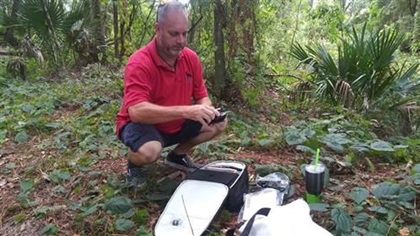
Safety is no less important on a movie set than anywhere else, and respecting and following FAA regulations is a must. In many respects, it's just like any other Part 107 assignment. I used Kittyhawk for airspace awareness and learned our chosen location was just inside Class C airspace (maybe 100 feet inside). Luckily, using the built-in access to the FAA airspace authorization system only took a minute. In addition to the regular preflight checks of battery power, return-to-home program, and camera settings, working on a film set means making sure that onlookers or crew are well clear of the flight area, and everyone is briefed on the flight operations plan. Check, check, and check.
Were we ready for "action"? Almost.
Dress rehearsal
A tricky flight path like this was, with many turns, elevation changes, obstacles, and lighting considerations, demanded a rehearsal. The job of any camera operator, whether it's on a dolly or a drone, is to make the camera itself disappear. In other words, the audience really shouldn't be aware, if you can help it, that a drone filmed the shot. As a cinematographer, you want them to get lost in the scene and story, and forget all about the camera. This is a useful tip for any kind of video, or movie, you make: The smoother you are with the camera (drone), the less distracting your shot will be.
Remember that I said this scene was going to be shown from the perspective of the camera flying backward with the ground, trees, and other elements coming into view as the audience is pulled deeper into the woods. This creates an element of suspense, since the viewer can't see what's coming.
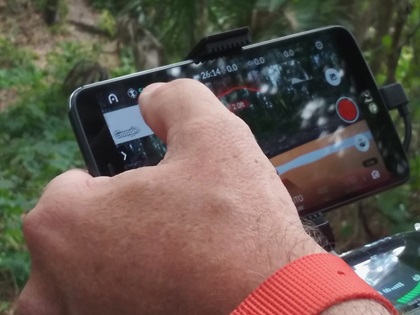
Now, actually flying backward through trees is is not impossible, but it also was not necessary. You may be familiar with the "fix it in post" philosophy. After a brief backward test flight, I decided the better option was to film flying forward and reverse the timeline in post. Flying forward, I could have a much better perspective of the shot changes, and avoid walking backwards through the woods and tripping, which can really hurt and really mess up a shot.
Our plan was to keep the drone low, about 12 feet or less above the ground, and I was never more than 25 feet or so away from it. Today was a good day to dolly. After a few dry runs, we were ready.
'Action!'
I used the Autel Evo for a few reasons. It's compact, but has an incredible camera that can shoot in 4K, and a high frame rate with a fast (100 megabits per second) write speed.
Shooting on a typical sunny day here in Florida presented a challenge, as the director wanted more of a dark, foreboding look to the scene. The tree canopy offered some good shade, but this is where a darker neutral density filter came into play. Using a polarized ND32 filter cut the glare of sunlight peeking through the trees, and also facilitated camera settings adjustments to compensate for the brightness. Also notable, I shot the entire scene in a raw format (LOG), which maximizes the image data available for color grading and matching in post. Remember that the automatic settings are quick and easy, but they also are very limiting if you want to spruce up your footage later. It can be very difficult, perhaps impossible, to achieve professional results with default camera settings.
After another set of forward flights, testing more angles, speed changes, and turns, it was time to review the clips, and I awaited the words that are magical to a camera operator: “Wow! I think we got it!”

The winning shot had some key ingredients to be mindful of: First, selecting the desired path was key. Second, getting the flight rehearsed and smooth was critical. Remember, the drone was flying right next to trees, even through the tangled branches of a downed tree that had fallen. The camera had to drift up and down dreamily and make subtle turns to focus the viewer’s attention on centered elements in the frame, all without pausing. Yes, keeping the drone moving at the correct pace at all times was challenging, but getting it right gave the shot the dreamy effect we were after.
Getting the most out of the camera files requires postproduction, and you might be surprised by the power of tools that come in small packages. Running LumaFusion on an iPad with an Apple Pencil, I was able to adjust the footage speed and reverse the scene quickly and easily. Then I sent it to Burgess and lead cinematographer Lexi Davis for further editing and color grading so the footage would match the live action shots filmed separately.
The red carpet awaits …
Survive... If I Let You premieres on the big screen October 26 at an Orlando Independent Filmmakers event in Altamonte Springs, Florida. This is one of a number of independent film events in Florida that I will be taking part in over the next couple of months. As a Film Florida member (the largest association in the state promoting the growth of Florida’s film industry), I get to speak to many filmmakers about using drones in their productions. Attending the hugely successful iHorror Film Fest in Ybor City on October 5, it was great being able to chat with filmmakers about using drones as a regular production tool.
My good friend, writer, and director Brian Karl Rosenthal, has been making the film festival circuit rounds with his award-winning film Fever. Rosenthal and his team took home the iHorror award for Best Florida Film at the iHorror Film Fest, and he plans on using drones in his next feature, and beyond.
“The ability to get high-quality aerial photography these days is mind blowing," Rosenthal said. "To think that not so long ago these shots would have necessitated a large budget and airborne camera operator. I love that the tech is democratized and it frees the storyteller to use tools that used to be all but inaccessible.”
Drones are versatile tools that can stand in for many different (and very expensive) pieces of traditional movie equipment, from dollies and cranes to jibs, for reasons including space, time, and budget. “The great thing is that drone cinematography is available to storytellers as part of their toolkit."
If you stop to look, you probably see drone photography nearly everywhere. Big-budget productions from the likes of Netflix, Hulu, Amazon Prime, and many others use tons of custom or stock drone footage to raise production value while sticking to a budget. (If the drone pilot did his or her job, you might have to look pretty carefully to realize a drone was even involved. That's one sign of truly professional work.)
Now, small, independent producers and directors can also use these flying tools to create incredible cinema with resources previously out of reach.
Whether you are a budding film cinematographer, a studio big shot, or just shooting home videos, you can use some of the same techniques and make your own work look like a blockbuster!
